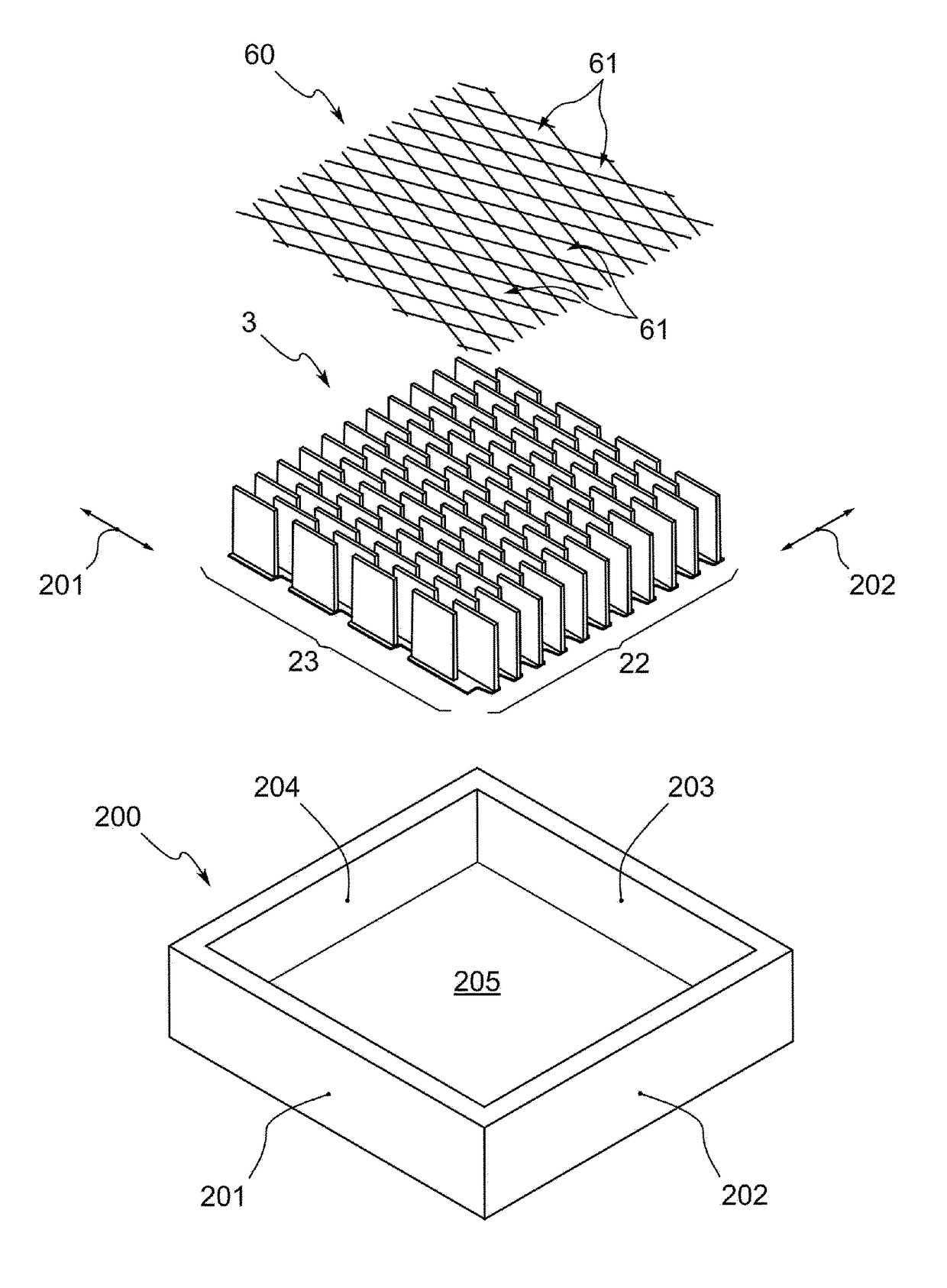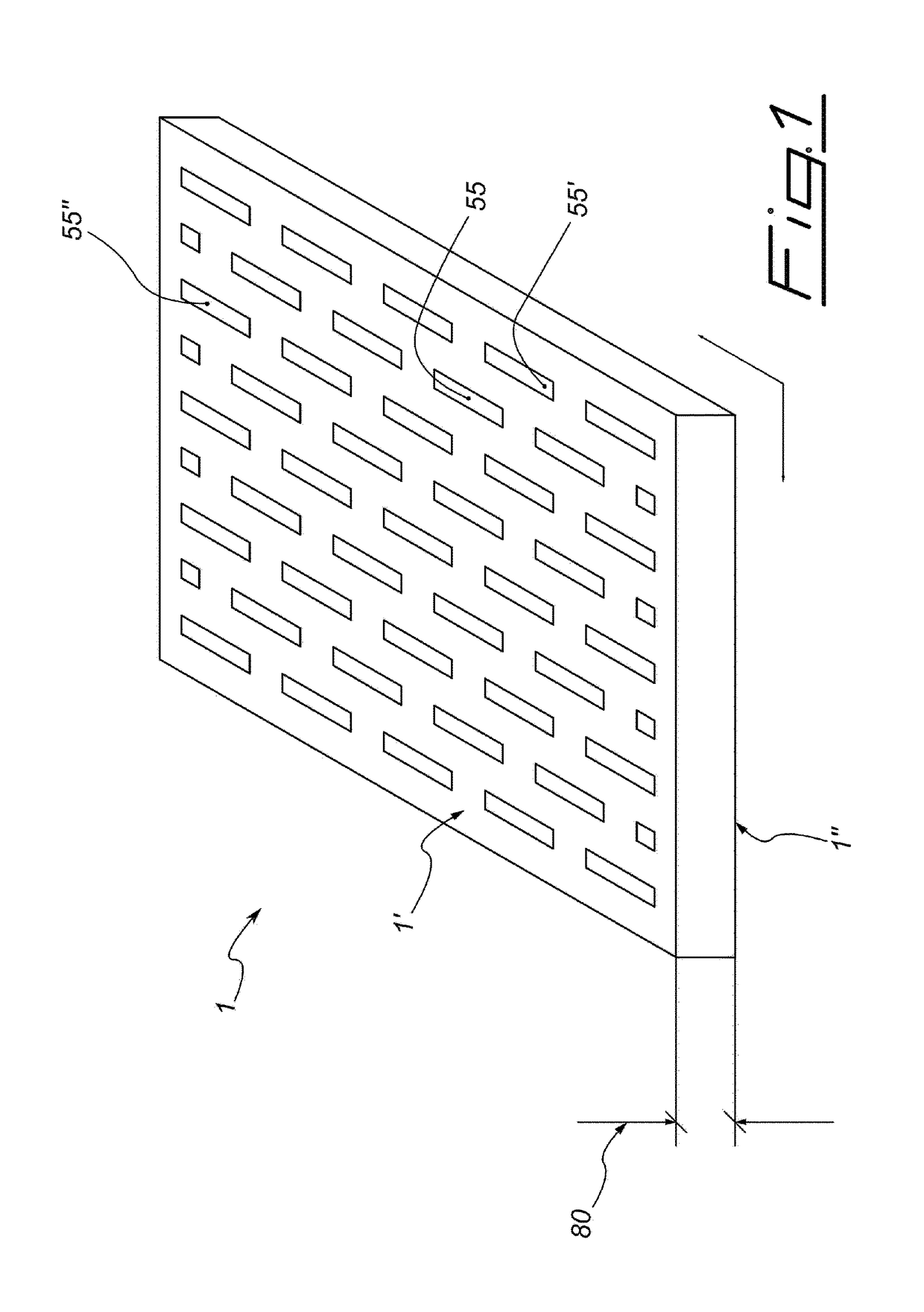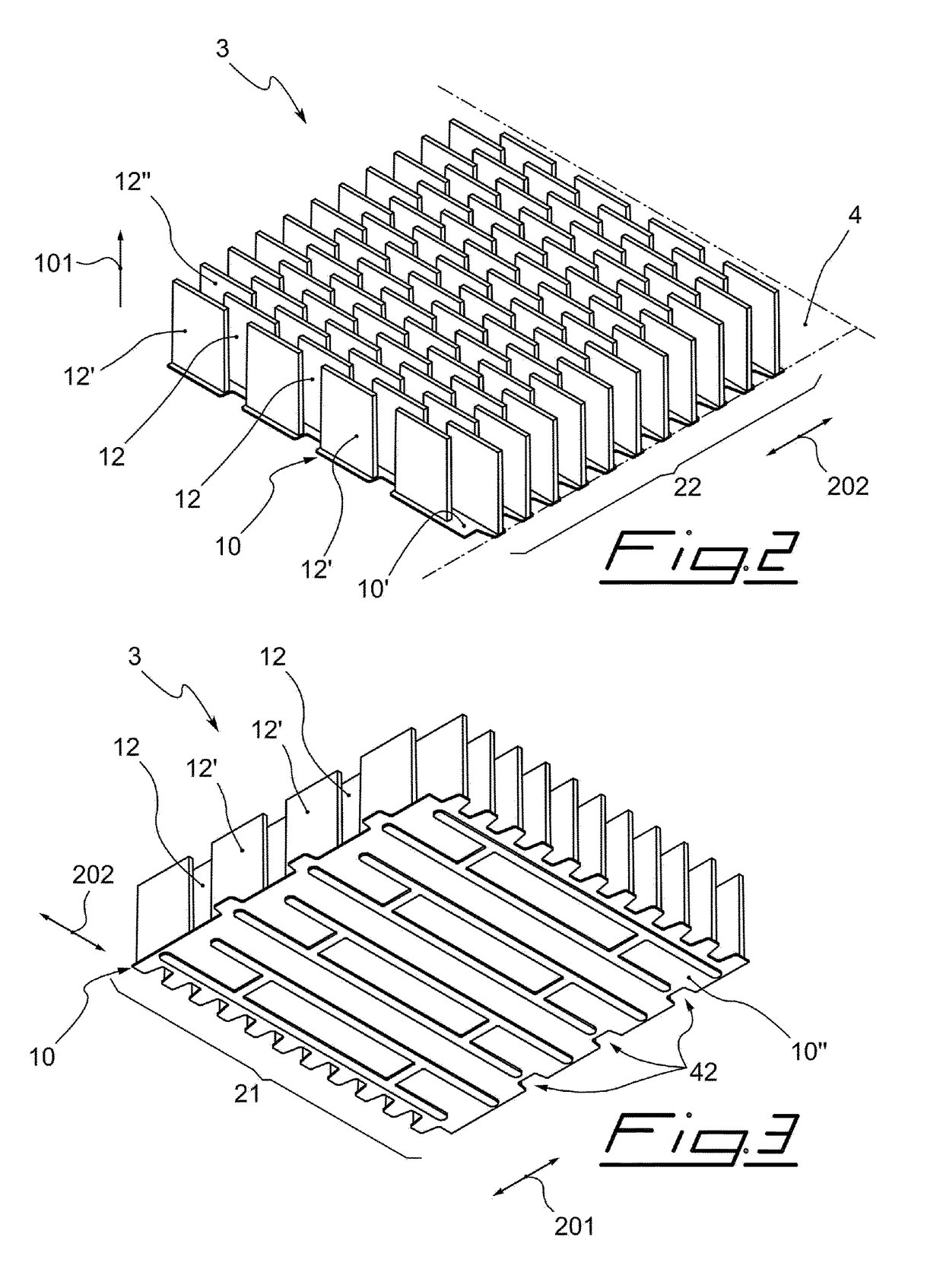Method for making a cementitious mortar based composite panel with light translucency properties and a structure of light translucent material
a technology of cementitious mortar and composite panels, which is applied in the manufacture of cementitious articles, can solve the problems of difficult positioning of optical fibers in the block, affecting the quality of cementitious mortar, and reducing the translucency effect, so as to achieve cost-effective and easy-to-use effects, light translucency properties, and avoid processing and material was
- Summary
- Abstract
- Description
- Claims
- Application Information
AI Technical Summary
Benefits of technology
Problems solved by technology
Method used
Image
Examples
Embodiment Construction
[0025]The present invention thus relates to a method for making a cementitious mortar based composite panel comprising a plurality of elements 55, 55′, 55″ made of light translucent material which allows the light transmission through the panel 1 from one first flat side 1′ to a second flat side 1″ of the panel itself. FIG. 1 is a perspective view of a panel 1 which can be made according to the present invention in which the flat sides 1′,1″, which are the main sides of the panel 1, i.e. those with a greater extension, are indicated. For the purposes of the invention, the distance between the first side 1′ and the second side 1″ defines the thickness of the panel 1 (indicated by reference numeral 80), such a distance being evaluated according to a direction substantially orthogonal to parallel planes on which the two main sides 1′,1″ are developed.
[0026]The method according to the present invention includes making a monolithic structure 3 of light translucent material adapted to be ...
PUM
| Property | Measurement | Unit |
|---|---|---|
| light transmission | aaaaa | aaaaa |
| light translucent | aaaaa | aaaaa |
| translucent | aaaaa | aaaaa |
Abstract
Description
Claims
Application Information
 Login to View More
Login to View More - R&D
- Intellectual Property
- Life Sciences
- Materials
- Tech Scout
- Unparalleled Data Quality
- Higher Quality Content
- 60% Fewer Hallucinations
Browse by: Latest US Patents, China's latest patents, Technical Efficacy Thesaurus, Application Domain, Technology Topic, Popular Technical Reports.
© 2025 PatSnap. All rights reserved.Legal|Privacy policy|Modern Slavery Act Transparency Statement|Sitemap|About US| Contact US: help@patsnap.com



